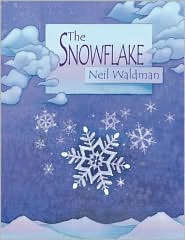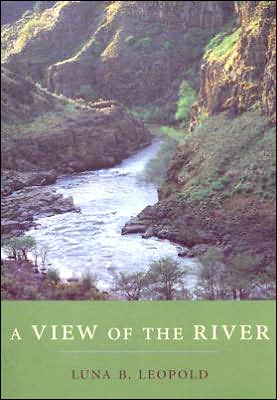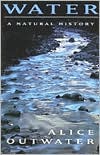Introduction to Water in California
It takes 8 gallons of water to grow a tomato, 616 gallons to make a burger patty. In fact, the food each of us consumes per day represents an investment of 4,500 gallons of water. In this densely populated state where it rains only half the year, where does all that water come from? This book tells the story of California's most precious resource, tracing the journey of water in the state from the atmosphere to the snowpack to our faucets and foods.
Search in google:
"This book engages readers at a personal level."—Donald Pisani, author of Water and American Government "Water is the foundation upon which California's ecosystems and economic vitality rise. This is a must read for anyone living in California, whether they are students, politicians, farmers, environmental activists, or corporate executives."—Arthur Guy Baggett, Jr., Chair, California State Water Resources Control Board "A comprehensive, readable natural history guide to an extremely complicated subject. It interweaves the historical, human, and technological factors with the ecological and environmental realities."—Pam Lloyd, former Chair of the California Regional Water Quality Control Board, S.F. Bay Region
INTRODUCTION TO WATER IN CALIFORNIA\ \ By DAVID CARLE \ The University of California Press\ Regents of the University of California\ All right reserved.\ ISBN: 0-520-24086-3 \ \ \ Introduction\ Water Web: Connected Californians \ A California family returned home from a summer outing. Their favorite beach had been posted with closure signs because of contaminated water, but they had found another spot down the coast. Now there was a rush for the bathrooms; toilets flushed several times, then the daughter claimed the first shower. While Mom loaded sandy bathing suits and towels into the washing machine, Dad began rinsing lettuce, tomatoes, and fruit at the kitchen sink. Their son was out in the driveway, energetically hosing salt spray off the family car. Sudsy water ran down the driveway into the sidewalk gutter, eventually falling into a nearby storm drain.\ Mom mixed up a pitcher of iced tea and then settled onto a lounge chair beside the swimming pool. Opening bills, she read aloud to Dad (as he put hamburgers on the grill) from a water company insert titled "The Water We Use Each Day."\ "It took eight gallons of water to grow one of those tomatoes you just sliced," she told her husband. "That burger patty you're holding took 616 gallons! And my cotton jeans represent 1,800 gallons of water."\ Dad started a sprinkler going on the lawn and noticed that the swimming pool level was down. The weather was warm and dry, and the kids' pool party hadsplashed plenty of water out the day before.\ "Landscaping consumes about half the water Californians use at home," Mom added, still reading. "Toilets use 20 percent and showers, another 18 percent."\ "Our water meter must be spinning like crazy right now," Dad said, wondering when their daughter would emerge from the shower.\ About six weeks earlier, a snow patch had finished melting near the summit of a Sierra Nevada mountain peak. Liquid and flowing again, after five months in cold storage, the water soaked into the ground and began to percolate downhill, pulled by gravity. Nearby tree roots absorbed much of it, but the rest eventually seeped out into a small creek at the base of the hill. The sun and wind evaporated a bit of the water. Animals drank a bit. Some passed through a trout's mouth and gills, losing dissolved oxygen and carrying off a bit of carbon dioxide.\ For millennia, water that traveled along this particular part of the water cycle had cascaded down the steep eastern face of the Sierra Nevada, carving a canyon as it went, and finally entered a salty inland sea called Mono Lake. Algae, brine shrimp, and millions of birds took advantage of that oasis in the desert. From there water had nowhere to go but up, reentering the atmosphere by evaporation, to someday fall again as rain or snow. But now, much of this snowmelt was diverted into an aqueduct. It began a 350-mile trip southward, finally reaching a storage reservoir in Los Angeles.\ In Southern California it was mixed with other water that had followed even longer routes. Some had originated in snowfields on the western slope of the Sierra Nevada. As that water approached San Francisco Bay via the Sacramento River and Bay-Delta, it was diverted southward into the California Aqueduct. Saltier water traveled up to 1,400 miles from the Colorado River watershed in the Rocky Mountains. Water pumped out of the ground from a local Southern California aquifer joined the mix. That groundwater carried industrial contaminants, but at levels deemed acceptable when diluted.\ Now, the water that had entered the Los Angeles Aqueduct system a month earlier was inside a pipe, poised before the water meter of a Southern California home. Each time there was a surge of movement, the meter measured the flow and water moved off through pipes toward the bathrooms, kitchen, laundry room, and yard spigots.\ The water from the Eastern Sierra snowfield took its turn sliding past the meter, paused, crept forward, and then began to ooze into the open. A single drop slowly gathered weight at the mouth of the kitchen faucet. At last it fell, straight into the drain. From there, it headed down toward the city's sewage treatment plant. Soon it would return to the sea.\ That faucet continued steadily dripping, as it had been doing for many weeks. Another six gallons of water, laboriously harvested from distant environments, dripped down the drain by the end of that day.\ An intricate system of dams, aqueducts, and pipes delivers water to people in California. Though water is the essential molecule supporting life on Earth, it can be taken for granted so long as the distribution system quietly works behind the scenes and the California climate cooperates with "normal" weather. Yet the movement of water across the landscape to serve human needs has consequences where water originates and where it emerges from faucets. A full appreciation of today's thoroughly "plumbed" California should foster understanding of the consequences that individual behaviors or community decisions bring for all who share California's water.\ Consider how difficult it must be for someone in Los Angeles, "at the far end of the pipe," to realize the connection between a few gallons of water thoughtlessly wasted-or carefully conserved-each day, and populations of birds on a salt lake 350 miles away. An environmental battle was fought in the courts and in the arena of public opinion for 16 years over damage caused to Mono Lake, an inland sea east of Yosemite National Park, by stream diversions to Los Angeles. After visiting Mono Lake and seeing it teeming with migratory birds, many tourists are amazed that anyone in California ever opposed complete protection for such a national treasure. Yet the distant, unseen impacts are hard to perceive for millions of urban water users making individual daily choices.\ When a new subdivision is built in an urban area, do planners and developers, or the families that move into those houses, appreciate the connections being made? Water must reach each household through a network of dams, aqueducts, water treatment plants, and delivery pipes. Some water may travel nearly 700 miles from the upper watershed of the Feather River in Northern California. Another branch of the water system extends 1,400 miles up the Colorado River to its headwaters in the Rocky Mountains of Colorado and Wyoming, so that the winter weather of those distant states has become more significant to many Californians' annual water supply than local rainfall.\ Federal, state, and local agencies operate systems that tie Californians together through their web of water pipes. Water availability shaped the state's urban growth and development. Extensive aqueduct systems enabled population increases far beyond what regional water limits would have allowed. Those large populations generated wastes and industrial pollutants that have moved into groundwater basins, rivers, and lakes, and diminished trust in the quality of the water emerging from our taps. Looking for more water to serve unceasing demands, urban water interests today covet supplies committed to California agriculture. The state's farms feed much of the nation, but they face pressure and financial incentives to market or transfer their water to domestic uses.\ The environment remains the ultimate source for water. California has a tremendous range of climates and hydrologic conditions. Snow on the Sierra Nevada becomes the state's largest "reservoir," refilled each winter, then gradually emptying into streams, rivers, and groundwater basins. Every river canyon in California that is suitable for a major dam has been developed. Flowing rivers have been transformed into reservoirs; the water often now travels through irrigation ditches and city pipes, leaving some river channels dry. Plants and animals that are just as dependent on water must settle for whatever people are willing to share with them. The transformation of the state's water-dependent habitats is greatly responsible for the length of California's list of endangered and threatened species.\ The first section in this book considers the water cycle that moves vital molecules of [H.sub.2]O across the California landscape, creating precipitation and climate patterns that shape the state's relationship with water. Next, the original waterscape of California is compared to today's scene, across 10 distinct hydrologic regions. In the third section, the distribution system that carries water between regions to serve human purposes is detailed. Many of the changes in the California waterscape followed the creation of the transport systems described here. The wide range of challenges that have resulted are described in the fourth section, a survey of environmental concerns, lost habitat, endangered species, pollution, domestic water quality issues, and of ties between water and growth. Finally, attention turns to ways of addressing these challenges to shape California's water future. Statewide planning, water marketing, recycling, desalination, conservation, and the future of dams in this state are some of the topics.\ This book is a natural history guide, but one that recognizes the overwhelming role of humanity in the story of California water. The focus here is on a contemporary understanding of the natural waterscape and watersheds of the state and of the extended watersheds that people created by redirecting water across the West. The goal is to help Californians better appreciate the water that emerges from their taps, what it takes to move it there, and what changes occur in environments along the way.\ Today, overall demand exceeds the supply of developed water in California. Understanding the natural role of water in this environment and the complexities of the interconnected water system is the first step toward wise choices by society's decision makers and by every Californian.\ (Continues...)\ \ \ \ \ Excerpted from INTRODUCTION TO WATER IN CALIFORNIA by DAVID CARLE Excerpted by permission.\ All rights reserved. No part of this excerpt may be reproduced or reprinted without permission in writing from the publisher.\ Excerpts are provided by Dial-A-Book Inc. solely for the personal use of visitors to this web site. \ \
AcknowledgmentsIntroduction - Water Web: Connected CaliforniansTapping into a Planetary Cycle1A Great Water Wheel3The Vital Molecule18"Normal" Weather: Anything but "Average"23California Water Landscape35Pristine Waterscape37Groundwater48Hydrologic Regions52The Distribution System85Expanding Watersheds87The State Water Project92The Central Valley Project103Colorado River Delivery Systems110The Los Angeles Aqueduct115The Hetch Hetchy Aqueduct118The Mokelumne Aqueduct123The North Bay125Challenges to California Water Management133Extinction is Forever135A Thirsty Garden146The Salton Sea153Animal Impacts155Beneath Your Feet157Out of Sight, Out of Control160Can You Drink the Water?164Giardia166Mass Medication167The Bottled-Water Phenomenon169The Problem is Us171Where Does Your Dog Go?174Unchecked Growth: Messing with the Cycle175Meeting the Challenges: California's Water Future179The Public Trust181Restoration184CALFED187The Debate Over Dams191Storage in the Bank200Transfers: Water As a Commodity204Short-Cutting the Cycle208Squeezing the Sponge211Clean Water215Lemonade from Lemons216What Future Do You Choose?219Acronyms and Abbreviations225Historical Timeline227Agencies and Organizations235References237Photo Credits245Index247
\ From the Publisher"Prescient and timely. . . Carle's obvious skills as an educator flow through the book as he reels in the reader with engaging hooks. . . The book is broad enough to be widely read and yet specific enough to serve as a text book."—North County Times\ "A colorful overview of nature and politics."—Chico Enterprise-Record\ "A straight-forward, non-political look at the history of water development in the Golden State."—The Record\ "Carle's writings are not so much a political statement as eloquent statements of historical fact."—Stockton Record\ \ \







